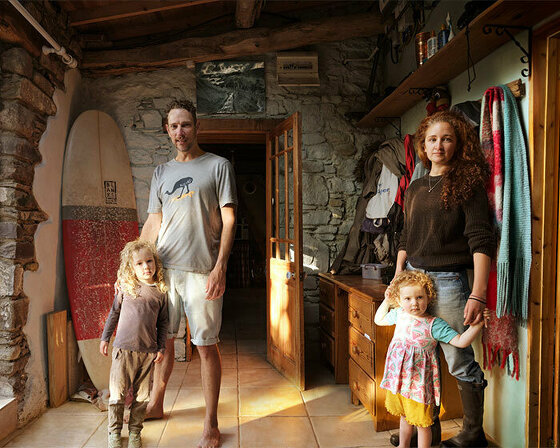KEEP UP WITH OUR DAILY AND WEEKLY NEWSLETTERS
PRODUCT LIBRARY
we're getting ready for the pre-opening launching today until friday, with public access scheduled for the 20th.
connections: 6
designboom speaks with french artist JR about la nascita, his new monumental rock installation just outside milan central station.
the 'poet of iron', as dubbed by his colleagues, passed away at his home in orient, new york, after a battle with pneumonia.
connections: +110
renowned photographer annie leibovitz, IKEA's first-ever artist in residence, unveils 25 powerful portraits of family life from stockholm to tokyo.
connections: +480

 anna utopia giordano’s reinterpretation of ‘venere di urbino’ by tiziano, 2012
anna utopia giordano’s reinterpretation of ‘venere di urbino’ by tiziano, 2012 ‘venere di urbino’ by tiziano, 1538
‘venere di urbino’ by tiziano, 1538 anna utopia giordano’s reinterpretation of ‘the birth of venus’ by alexandre cabanel, 2012
anna utopia giordano’s reinterpretation of ‘the birth of venus’ by alexandre cabanel, 2012 ‘the birth of venus’ by alexandre cabanel, 1863
‘the birth of venus’ by alexandre cabanel, 1863 left:anna utopia giordano’s reinterpretation of ‘venus anadyomäne’ by jean auguste dominique ingres, 2012 right:’venus anadyomäne’ by jean auguste dominique ingres, 1848
left:anna utopia giordano’s reinterpretation of ‘venus anadyomäne’ by jean auguste dominique ingres, 2012 right:’venus anadyomäne’ by jean auguste dominique ingres, 1848 anna utopia giordano’s reinterpretation of ‘the sleeping venus’ by artemisia gentileschi, 2012
anna utopia giordano’s reinterpretation of ‘the sleeping venus’ by artemisia gentileschi, 2012 ‘the sleeping venus’ by artemisia gentileschi, 1625-30
‘the sleeping venus’ by artemisia gentileschi, 1625-30 anna utopia giordano’s reinterpretation of ‘la nascita di venere’ by sandro botticelli, 2012
anna utopia giordano’s reinterpretation of ‘la nascita di venere’ by sandro botticelli, 2012 ‘la nascita di venere’ by sandro botticelli, 1486
‘la nascita di venere’ by sandro botticelli, 1486 left: anna utopia giordano’s reinterpretation of ‘venere’ by francesco hayez, 2012 right: ‘venere’ by francesco hayez, 1830
left: anna utopia giordano’s reinterpretation of ‘venere’ by francesco hayez, 2012 right: ‘venere’ by francesco hayez, 1830 anna utopia giordano’s reinterpretation of ‘venere e cupido’ by diego velazquez, 2012
anna utopia giordano’s reinterpretation of ‘venere e cupido’ by diego velazquez, 2012 ‘venere e cupido’ by diego velazquez, 1648
‘venere e cupido’ by diego velazquez, 1648 anna utopia giordano’s reinterpretation of ‘the power of venus’ by westal richard, 2012
anna utopia giordano’s reinterpretation of ‘the power of venus’ by westal richard, 2012 ‘the power of venus’ by westal richard
‘the power of venus’ by westal richard left: anna utopia giordano’s reinterpretation of ‘the birth of venus’ by william-adolphe bouguereau, 2012 right: ‘the birth of venus’ by william-adolphe bouguereau, 1879
left: anna utopia giordano’s reinterpretation of ‘the birth of venus’ by william-adolphe bouguereau, 2012 right: ‘the birth of venus’ by william-adolphe bouguereau, 1879


